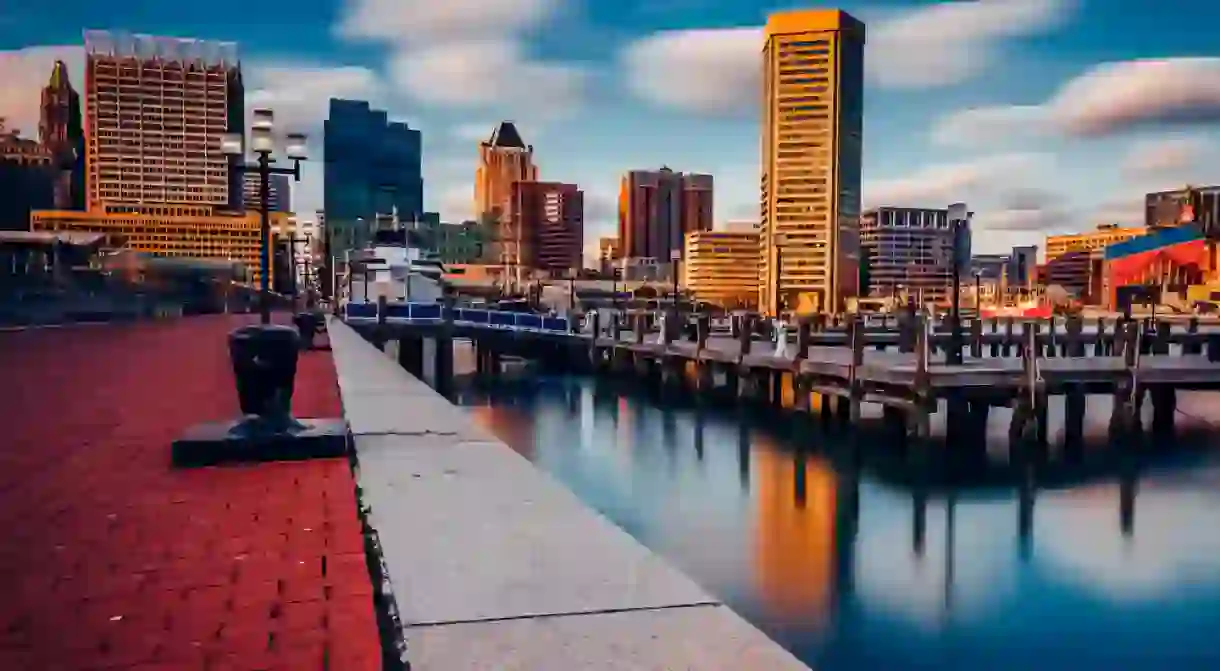Why Is Baltimore Called Charm City?

City slogans for the city of Baltimore have come and gone. And even though “Charm City” hasn’t been an official city slogan for many years, it has stuck around in the hearts and minds of residents and travellers. So, let’s talk about how Baltimore’s charming nickname came to be.
Long before it was Charm City, John Quincy Adams dubbed Baltimore “the Monumental City” in 1827. But, as the city has dealt with changing times and the growth of Washington D.C., Philadelphia, and New York City so close by, it has had to reinvent itself multiple times with new nicknames and slogans. Some memorable titles include “Crabtown,” “Mobtown,” for riots that occurred leading up to the War of 1812, and “Clipper City,” for the Baltimore clipper ships of the Revolutionary War and War of 1812. You can also find city benches still stamped with “The Greatest City in America” from the early 2000s.
The current official slogan, “Birthplace of The Star-Spangled Banner,” may have some staying power, taking advantage of Baltimore’s historical connection to an anthem with a timeless significance to people all over the world. Only time will tell. As for “Charm City,” some have mistakenly connected its origins to longtime Baltimore journalist H.L. Mencken. But while the Sage of Baltimore did talk up the city’s charms often in his work, he died nearly 20 years before “Charm City” came to be. So, what really happened?
In 1974, with trash collector and police strikes stirring unrest, public morale in Baltimore was down in the dumps. Then-mayor William Donald Schaefer had big ideas for the city, but he wanted to drum up the city’s image in the meantime. So, he hired four leaders of the city’s largest ad agencies to create a tourism campaign. One of them, copywriter Bill Evans, thought that “Baltimore has more history and unspoiled charm tucked away in quiet corners than most American cities out in the spotlight.” They decided to work the “charm” angle by encouraging visitors to pick up a charm bracelet when they came to Baltimore; visitors could then receive charms at each of the five highlighted attractions they visited.
The Charm City ads ran in The Sun and The Evening Sun during the mid-1970s, displaying icons of Baltimore like the steamed crabs, marble steps, and, yes, H.L. Mencken himself, with the bracelet. But, in the days before the Inner Harbor and Camden Yards (which Schaefer himself would help bring about), there wasn’t quite enough appeal to bring in the money to keep supporting the campaign. It seemed as if Charm City would be no more.
But despite the campaign’s failure, the people embraced the name. They incorporated it into store names, team names, and even bus names, and they still use it over 40 years later. According to the late Evans, in a 2001 letter to The Baltimore Sun, “It gave Baltimore a sense of pride in being characterized as something as simple (and powerful) as being ‘nice.’ This theme would be just as appropriate for the city today as it was then.” And it’s true. “Charm City” captures much of the friendly, colorful, “How’s it goin’, hon?” attitude of the people of Baltimore in a simple phrase. And as the Inner Harbor and other areas of the city have come out from the shadows of the 1970s, more and more people see that charm. Mencken would be proud.
Check out these tours and excursions in Baltimore.













